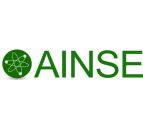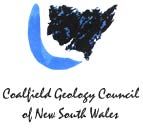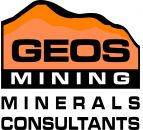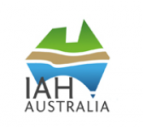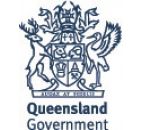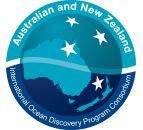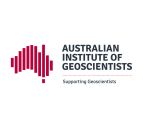Traditionally, mineral system research has focussed almost exclusively on inorganic geochemistry and mineralogy.However, petroleum basin and modern seafloor hydrothermal vent studies have identified that organic matter can have a significant influence on the behaviour of mineralising fluid and effective integration of organic and inorganic systems knowledge is essential for a proper treatment of ore formation in the organic-rich environments which characterise many of Australia’s valuable mineral deposits. This session will present cutting-edge research into organic-inorganic interactions in mineral systems that has the potential to transform traditional ore genesis models.
Magnetic mapping in a 2D sense is a mature method and is usually undertake before or at least in conjunction with fieldwork. New techniques are providing more quantitative information which is necessary for 3D mapping. Developments have occurred in both software and hardware areas including new inversion approaches and measuring the magnetic gradient tensor in the air and downhole. As interest increases in the framework and structure of the deeper crust, and explorers look at deeper geophysical anomalies, more quantitative methods are needed to extract as much information as possible from survey data.
This session would present the latest information on gold deposits of this vast region; the deposits to be discussed in this session would cover: orogenic-mesothermal, epithermal, porphyry (with gold) and related tectonic settings.
The application of mineralogy and mineral geochemistry to resource exploration was a key interest and passion of Keith Scott. This session on ‘Mineralogical Exploration’ will highlight contributions to our improved understanding of the use of mineral properties and compositional data in mineral exploration. It also invites papers on new mineral-related techniques for exploration and the broader aspects of geochemical exploration controlled by particular minerals and mineral assemblages, including in the regolith.
The late Archaean was a period of extraordinary magmatism and ore deposit formation. Vast volumes of magma, from ultramafic to granitic composition, were generated over a few tens of millions of years, and are associated with some of the world’s major ore deposit provinces including gold, nickel and base metals. Was this a once-only cataclysmic event representing a major transition in the thermal structure of the planet? Or was it a combination of plate tectonic processes similar to those in the modern Earth, but accompanied by some additional tectonic component or exceptional preservation? Isotopic mapping of the deep crust is one technique that is bringing exciting new insights, as is a rapidly growing body of data on igneous geochemistry, stratigraphic evolution of greenstone belts and understanding of the ancient sulphur cycle. This session will attempt to bring some of these strands together, and to define some of the critical questions that remain to be answered as we struggle to understand this pivotal event in the evolution of the planet.
RE09 UNCOVER – Searching the Deep Earth
This session invites papers to specifically addressing the challenges of exploring beneath cover in Australia. Exploration under cover comes at substantially greater expense and risk compared to the traditional exposed geology search space. The UNCOVER initiative recognises that we need to change the way we explore the 80% of the Australian continent that is covered by providing the industry with new insights, methods and tools that make the investment substantially more attractive than it currently is.
To this end, UNCOVER is a call to arms for exploration geoscience researchers and collaborators in surveys and industry. Through new science and better informed data collection programs, the search space needs to increase and our ability to identify and rank prospectivity based on geophysical, geochemical and geological information needs to improve and adapt to this challenge. This will require new understanding in mineral systems and their evolution and preservation. It will also require new methods for interpretation of geochemistry and geophysical signatures informed by the characteristics of the cover sequences as well as better ore deposit and mineral system models. Models for lithosphere scale controls on the localisation of especially tier one mineral deposits have an important role in early ground selection and first pass targeting linked to those geophysical geochemical and geological data sets that explorers use. Further, there is much opportunity across Australia to update province scale metallogenic evolution models in space and time including where they allow interpolation of trends across poorly explored covered terrains. Vectors to mineralisation and fertility insights across all scales is in many respects a new frontier to exploring beneath cover.
This session invites papers on any of the above subjects that specifically point to application in mineral exploration under cover.
RE10 Reconstructing Precambrian geological processes, palaeogeographic and geodynamic settings, and ore deposits (RE10: Reconstructing Precambrian processes and settings)
Precambrian terrains and their mineral deposits span the bulk of the Earth’s history yet our ability to reconstruct and understand their tectonostratigraphic and geodynamic evolution is still developing and many aspects remain controversial. Understanding and reconstructing Precambrian processes and settings requires multi-scale and interdisciplinary research combining field geology, structural geology, volcanology, sedimentology and petrography with cutting-edge analytical techniques including geochemistry, isotope geochemistry and geochronology. In this symposium we solicit contributions documenting stratigraphic, paleogeographic, structural and geodynamic reconstructions of host rock successions, including alteration studies, in both mineralised and unmineralised Archean and Proterozoic terranes with the intent to provide new insights into Precambrian processes and controls on fertilization, mineralisation and exploration targeting.
RE11 Multiscale characterisation of ore forming processes
To use successfully the wealth of data collected from ore deposits, it is necessary to understand the physical and chemical processes by which they form. These processes range in scale from whole earth geodynamics, to the nanoscale fluid-mineral interactions that occur during deposition. Recent advances in characterisation techniques have allowed ever increasing spatial, temporal and analytical resolution of ore forming processes. It is the intent of this session to bring together these apparently disparate datasets to better characterise ore deposits and their geologic context. Contributions should discuss how datasets may be used to advance the understanding of how ore deposits form and how this may aid exploration. We welcome contributions at every scale using field, experimental and analytical methodologies and that focus on the processes by which ores have formed.
RE12 Optical Sensing for Advanced Mineral Characterisation for Exploration and mining (RE12: Optical sensing for advanced mineral characterisation)
Optical Sensing Technologies, such as infrared reflectance spectroscopy and Raman spectroscopy, are increasingly applied for routine advanced characterisation of mineral assemblages. A multitude of technologies, ranging from spaceborne sensors to drill core and microscope scanning devices allow a multiscale characterisation of mineral systems. Public pre-competitive mineralogical data, in form of continental-scale mineral maps to drill-core scanning data have become available to the Australian resources sector over the past years, empowering explorers with mineralogy. This session invites presentations that showcase the latest advances in remote and proximal optical sensing technologies and their applications for the resources sector, including data processing and mineralogical interpretation. Case studies of mineral systems, where optical sensing technologies are integrated with other geoscience data are welcome, as well as detailed optical analytical studies of ore and vector minerals.
RE13 3D Geoscience: Methods, Applications and Challenges in Imaging and Analysing Solid Earth systems at different scales (RE13: 3D geoscience: Methods, applications and challenges)
The three dimensional (3D) geometry and structure of the Earth, at multiple scales, is one of the most fundamental constraints used to help solve many problems within the Geosciences. It typically reflects the physical properties of bedrock, sedimentary basins and regolith cover, and in many cases structure relates to the spatial distribution of mineral deposits and energy resources. 3D structural modelling and imaging techniques can be used to extend, and up-scale, knowledge from known and well understood to inaccessible or data poor parts of Earth’s crust and lithosphere.
We invite contributions that present applications and novel approaches of 3D imaging and modelling of Solid Earth including, but not limited to the following topics:
• Nano- to cm-scale models of rocks, minerals, grains, pores and fractures acquired by optical or electronic imaging or by X-ray tomography
• Metre-scale models of rock outcrops, and engineered rock surfaces acquired by laser scanning and photogrammetry
• 100 m to km-scale models of geological structures such as folds and fault zones, mines, petroleum and geothermal reservoirs, and carbon storage sites acquired by geological, geophysical and geochemical mapping and detection methods
• 10 km and larger scale Solid Earth models that image composition and structure of Earth’s crust and mantle based on active and passive source seismic data, mineral spectra, potential fields and electrical properties.
RE14 Beginning with the end in mind: exploration and geometallurgy (RE14: Exploration and geometallurgy)
The common consensus that ore reserves are decreasing in grade and becoming more complex to mine and refine is motivating an increased effort to characterise both the geological and metallurgical properties of the ore. The instrumentation and testing options available for measuring relevant rock properties means high sample support can be achieved for more than just grade, making analysis of ‘big data’ one of the next challenges. Since geologists have access to the ores long before metallurgists get involved, what role is there for exploration to enhance the transition to an operating mine? Is the geological thinking that guides discovery and expansion of ore deposits also capable of improving the ore-body models which guide business decisions? In this session, we would aim to discuss the opportunities and challenges facing exploration-stage ore characterisation with respect to future ore processing options.
RE15 Geomicrobiology, the nexus between geoengineering and biotechnology (RE15: Geomicrobiology, geoengineering and biotechnology)
Joint session with Living Earth theme
Geomicrobiology is a rapidly growing field that deals with microbial transformations of materials composing the earth's crust, including oceans, seas, lakes, bottom sediments, soils, mineral deposits, and rocks, and the geological impact these transformations have had over geologic time and up to the present day. Microorganisms have been actively transforming most organic and inorganic materials at the Earth’s surface since the origin of life. While impacts over geologic time have occurred on a planetary scale, biological processes can transform local environments on relatively short time scales, such as the generation of acid mine drainage to the bioremediation of contaminated groundwater. With many mineral resources becoming increasingly scarce, geomicrobiology offers the potential to exploit natural, microbial processes for use in mineral exploration, metal extraction and bioremediation. This session will examine the role of microorganism in catalysing Earth-systems processes from atomic to ecosystem scales, highlighting the unrealised potential to exploit microbial processes that transformation organic and inorganic materials at the Earth’s surface.
RE16 The 3rd National Virtual Core library Symposium
At the AESC in 2010 in Canberra and at the IGC in Brisbane in 2012 there were held respectively the 1st and 2nd National Virtual Core Library Symposia. The community involved in this would like to convene the 3rd National Virtual Core Library Symposium under the auspices of your AESC2014. This symposium series supports the growing community of providers and users of the new pre-competitive data being amassed under the AuScope NVCL program and involves all the State and Territory Geological Surveys, plus their downstream users, and the CSIRO. In 2014 it should also be able to support growing international and private sector providers and the take-up of automated core logging technologies and we would see clear opportunities to invite additional and overseas speakers as we have in the past. The scope will cover the growing use of automated hyperspectral and imaging technologies to extract more value from drilled materials (cores, chips, pulps, etc) and provide the users of these data a place to a) learn about these new techniques, and b) existing users to share their experiences across the diverse geological environments now covered by the activities of all the State and Territory Geological Surveys and increasingly the private sector.








